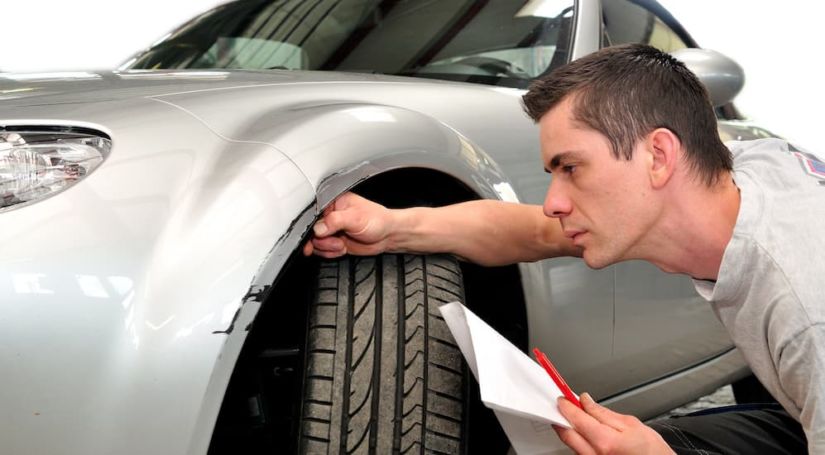For many car buyers, going with a used model often works out better than a new one in many ways. The major advantage, of course, is a lower price. But navigating the used car wilderness to find a dependable and reliable vehicle takes a bit of researching and investigation. You want to be sure that the car you’ve got your eye on doesn’t have any potential problems that might prove costly later on. If you’re looking for new (to you) wheels and are asking yourself, “what do I need to know about inspecting used cars for sale near me?”, here are some things to look at before you buy.
General Body Condition

Examine each body panel as well as the roof for any dents, scratches, or rot. Check that body panels all align correctly as to not create any wide gaps, and make sure the paint finish and color match evenly across the entire car.
If you do find minor dents and scratches, these may be cosmetic flaws you can live with. But if you find rust or rot, that could be an indication of a more serious problem. Be sure to have a flashlight handy for checking inside the wheel wells for rust.
Open and close all doors as well as the trunk to see how well they perform and if they appear to be loose on their hinges. Also, look at all rubber sealing for any cracks or tears.
Windshield and glass
Look closely at all windows and glass for cracks or chips caused by road debris and rocks. Small chips usually aren’t an issue, but any larger cracks could worsen in time, which could result in costly replacement in the future.
Shocks and Struts
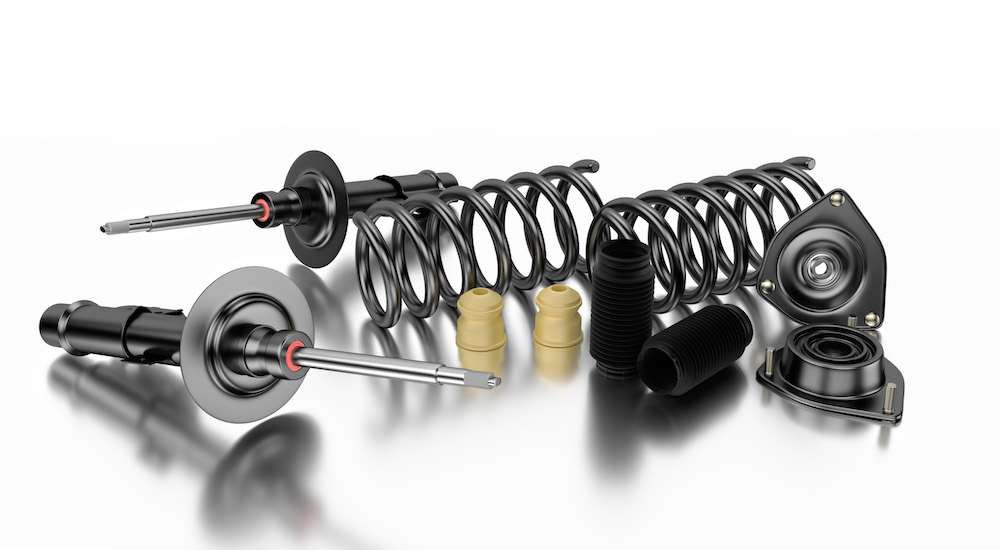
Walk around the car and bounce it at all four corners. It should just bounce once if the shocks are still in good shape. If it keeps bouncing, then the shocks are fairly well worn.
Grabbing the top of each tire and giving it a pull will indicate any possible problems with wheel bearings or suspension joints. If doing this results in a clunking sound, those components may be in poor condition.
Exterior Lights
This is where having a friend with you comes in handy. While you are in the car, have them confirm that all the lights are working properly on the outside. Also, inspect all of the lens covers carefully for cracks or breaks.
Tires
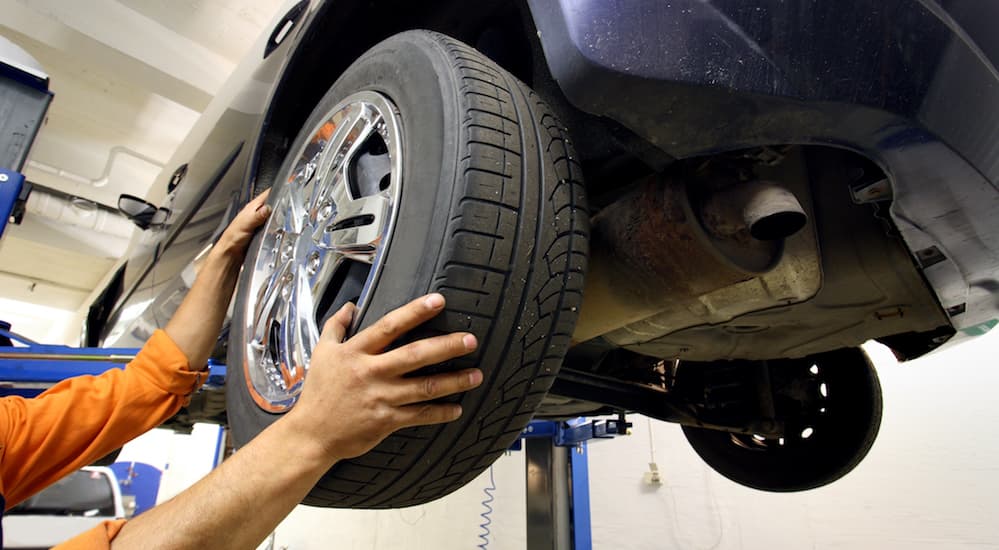
Tires are one of the most critical components of a vehicle. When looking at a used car, pay close attention that all four tires are the same, as different tires would mean they’ve been replaced. If the car you’re looking at has low miles, it should still have the original set of tires.
Tread wear should appear generally even on all four tires, an indication that they have been regularly rotated, properly inflated, and that the vehicle has been properly aligned. This is especially important for all-wheel drive cars. In order to be legal, all tires must have a tread depth of at least 1/16th of an inch.
Closely examine the sidewalls of each tire for scuffs, cracks or bulges, and also check the actual wheel for any dents or cracks. If the car has a spare tire (it should), be sure that is in good condition and that there is also a jack and lug wrench included in the event of a breakdown.
Odor
If you open the car door and get a musty smell, that may be an indicator of mold under the floor carpet from a water leak. If the car was used by a smoker, that odor will linger in the seats and carpet and you’ll also see evidence in the ashtray and lighter (if equipped). Mold in particular can be a very tricky problem to resolve so that in itself might be a dealbreaker.
Seating

Get in the car and try out all the seats, both front and back, to double check the comfort and to inspect the upholstery for excessive wear or tears. Also, go through all of the various seat adjustments to ensure they are working properly.
Instrumentation and Controls
By turning the ignition switch without actually starting the car, you should see all the warning lights illuminate briefly before you start the engine. Make sure all of these lights are working properly, especially the check engine light. Flip every button and switch on the dashboard to make sure they function properly and test both the heater and air conditioner.
Audio system
Double-check the reception for both AM and FM stations, and if there’s a CD player, bring a test disc along. If the stereo has an auxiliary jack for an MP3 player, bring that along as well.
Roof
If the car has a sunroof, look closely for any sealing issues and that it opens and closes smoothly. For convertible tops, you can check tears by shining a flashlight up into it.
Hoses and belts
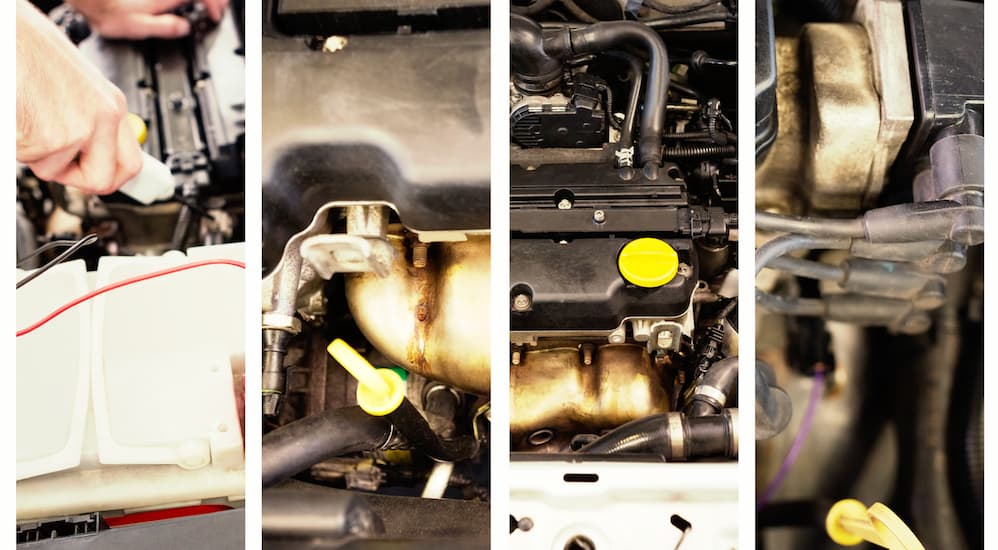
The rubber on various hoses in the engine should be firm and not completely hard or cracked. All belts should also be visually inspected for excessive wear, cracks, or fraying.
Engine fluids
Fresh engine oil will be somewhat honey-colored. If it’s at all gritty, then it’s been in there for a while. If you see water droplets on the dipstick, that could indicate an issue with the engine block or gasket, both serious problems. Transmission fluid should be on the pinkish side and smell somewhat like motor oil. This fluid should also be checked after the engine has been running for a while. Radiator coolant should appear somewhat green or orange in color.
Battery
Batteries billed as maintenance-free should have a charge indicator which will display its health – green means it’s in good shape and yellow or black means it should be replaced. If the battery has filler caps, wipe them off before unsealing them to check the liquid level inside.
Under the Vehicle
Check the tailpipe for any visible residue. Anything black and greasy is likely from burning oil. A heavily rusted tailpipe is a sign that it should be replaced. Some types of smoke from the tailpipe might also indicate problems; a white-gray smoke can be a sign of a leaking head gasket while blue-gray smoke is a sign the vehicle is burning oil.
If you can manage to slide underneath the car, be on the lookout for fluid leaks or drips. You can spot these easier by spreading out a lightly covered sheet on the ground.
If you spot any areas under the car which have kinks or large dents, that may indicate it’s been in an accident. Any welding on the frame can also suggest the repairs have been performed.
Consult a Mechanic
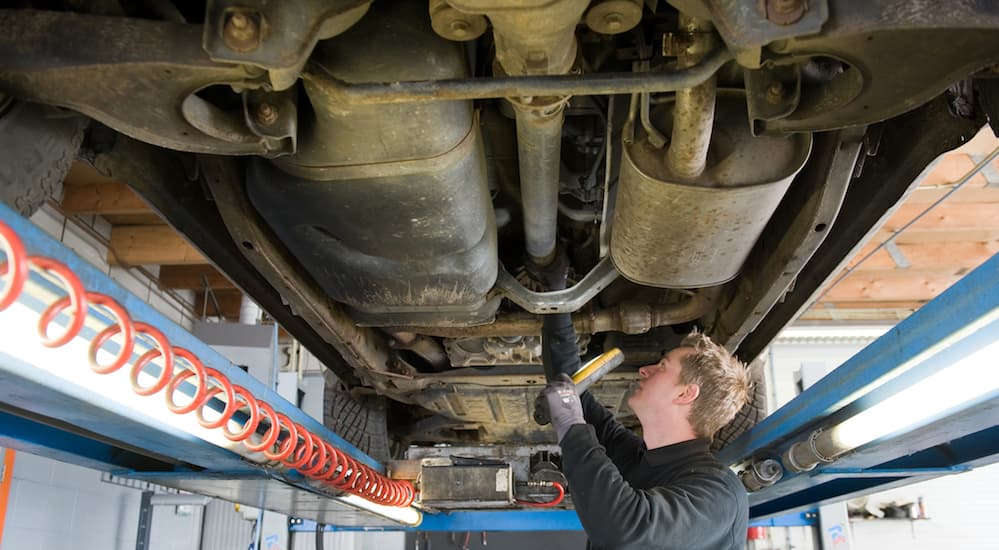
Much of the above inspection work you can do yourself, but if you really want complete peace of mind, it’s best to bring the vehicle to a professional mechanic for a complete look. If buying from a dealer, they should let you take the vehicle temporarily as long as you leave them some form of ID. You may need to negotiate this if working with a private seller. A mechanic can offer a more experienced eye and the professional diagnostic tools needed to conduct a full examination.
Take Your Time
Even with buying a used car, you’re still making a significant investment. To avoid any headaches later on down the road, try not to rush into buying a used car without fully inspecting it first. Armed with the information above, you can be sure you’ll be getting a dependable and reliable vehicle that will last for years to come.
